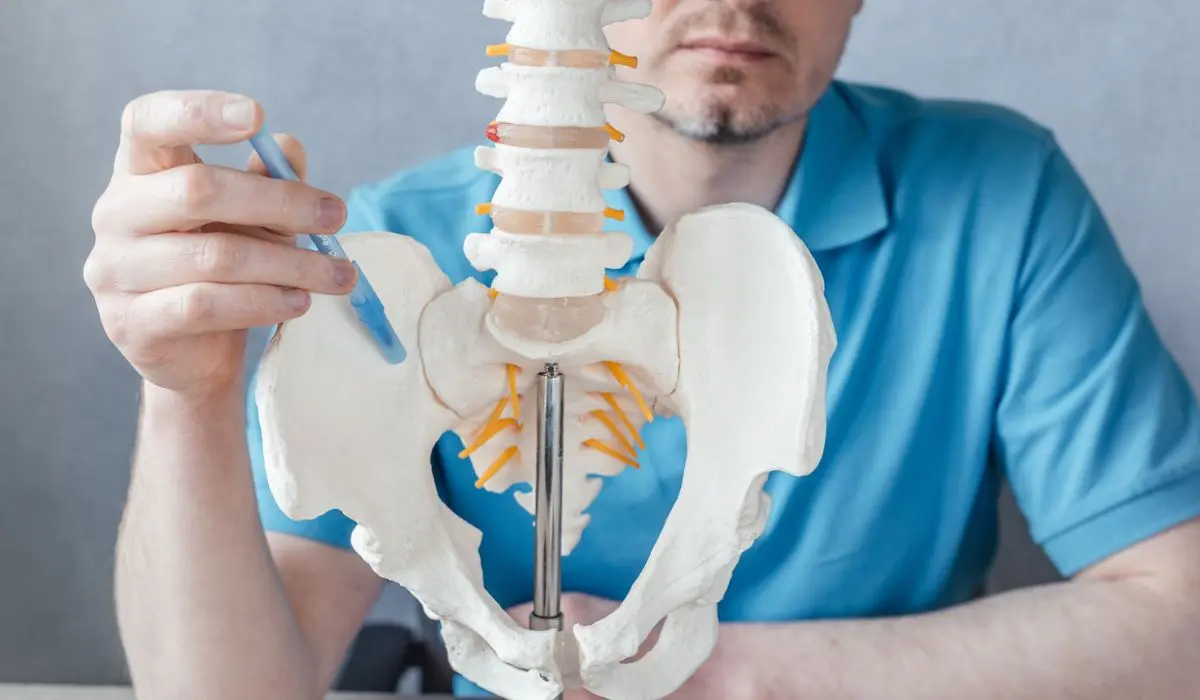Health
Effective Treatment Options For Sacroiliac Joint Pain You Need To Try!

Sacroiliac joint pain can be a real nuisance. It affects the lower back and hips and can cause discomfort and limited mobility. To manage this condition, it is essential to know the treatment options. These range from physical therapy and NSAIDs to supportive belts and braces.
Sacroiliac Joint Pain: Causes, Symptoms, and Treatment
In more severe cases, more invasive interventions may be necessary. These include corticosteroid injections and radiofrequency ablation to stop pain signals.

Every individual’s experience with sacroiliac joint pain is unique. Thus, professional medical advice is needed to determine the most appropriate treatment plan. Research has found that this condition may overlap with other conditions such as herniated discs or arthritis.
By understanding the available treatments and working with healthcare providers, individuals with sacroiliac joint pain can find relief and regain control of their lives. Remember, everyone’s journey is different, and patience is key.
What Causes Sacroiliac Joint Pain?
Sacroiliac joint pain can be caused by various factors, such as arthritis, trauma, pregnancy, ankylosing spondylitis, infection, and even hypermobility syndrome. These conditions can result in instability and discomfort. Additionally, improper lifting techniques and prolonged sitting with poor posture can contribute to the pain.
Symptoms Of Sacroiliac Joint Pain
Sacroiliac joint pain can cause various symptoms. These can include:
- Lower back pains radiating down to the legs and hips.
- Pain in the hips, making walking or standing hard.
- Tenderness or discomfort in the buttocks, which gets worse with movement or sitting.
Non-Surgical Treatments for Sacroiliac Joint Pain
Did you know there are non-surgical treatments for sacroiliac joint pain? Consider these three points:
- Physical therapy – exercises and stretches to strengthen the muscles around the joint.
- Pain medications – over-the-counter NSAIDs like ibuprofen, or prescriptions for severe cases.
- Sacroiliac joint injections – anesthetic and steroid medications injected into the joint to reduce pain. May need multiple injections for long-term improvement.
Plus, minimally invasive procedures like radiofrequency ablation or pulsed radiofrequency may be options if the conservative treatments don’t work.
Pro Tip: Good posture and avoiding strain on the sacroiliac joint can help prevent discomfort. Leave surgery to the experts!
Surgical Treatments for Sacroiliac Joint Pain
Sacroiliac joint pain? Surgical interventions could be your solution! Procedures such as sacroiliac joint fusion or minimally invasive SI joint arthrodesis can reduce symptoms and restore function. Fusion may involve screws, plates, or rods, while arthrodesis involves small implants.
But each patient’s case is unique. Age, overall health, the severity of pain, and response to conservative treatments all play a role in determining the right surgical approach. So, consult a specialist for tailored recommendations.
Recovery and Rehabilitation
Proper rest is a must for healing sacroiliac joint pain. Stressful activities should be avoided. Ice and heat therapy can reduce inflammation and ease the pain. Apply ice packs for 20 minutes several times a day to reduce swelling.
Physical therapy is key in the recovery process. A therapist will design exercises to strengthen the muscles around the joint and raise stability. Manual therapy techniques like joint mobilization and soft tissue manipulation can also be done by a physical therapist to reduce pain and improve joint function.
In severe cases, injections of corticosteroids or anesthetics may be given for temporary pain relief. Gradually returning to normal activities should be done with guidance to stop re-injury.
Good posture and low-impact exercises such as swimming or cycling are important for long-term rehabilitation. Always consult a healthcare professional before starting any exercise or treatment plan for sacroiliac joint pain. To prevent sacroiliac joint pain, maintain good posture and avoid twisted movements.
Preventing Sacroiliac Joint Pain
To fight sacroiliac joint pain, do these four things:
- Keep a healthy weight to take pressure off the joints.
- Sit and stand with good posture to avoid stressing the joints.
- Exercise and strengthen your core to support the joints.
- Lift correctly, bending at the knees and keeping your back straight to protect the sacroiliac joint.
Conclusion
Sacroiliac joint pain can be treated with a mixture of conservative measures and medical treatments. Exercises, physical therapy, drugs, and injections are the most common options. They help with pain, stability, and restoring proper functioning.
Exercises are very important for treating this condition. They strengthen core and pelvic muscles, providing support to the sacroiliac joint. Heat and ice therapy, chiropractic care, and bracing are also helpful. Drugs such as NSAIDs can help manage pain and inflammation.
If these treatments don’t work, there are medical interventions like corticosteroid injections or radiofrequency ablation. These interventions are more targeted and last longer, but you should discuss the risks and benefits with a healthcare professional before using them.
Don’t let sacroiliac joint pain stop you from living life to the fullest. Seek medical help now to get timely treatment!
Frequently Asked Questions
Sacroiliac joint pain refers to discomfort or pain in the sacroiliac joints, which are located at the base of the spine and connect the sacrum (the triangular-shaped bone at the bottom of the spine) to the iliac bones (the large pelvic bones).
Sacroiliac joint pain can be caused by various factors such as trauma or injury, degenerative arthritis, anatomical abnormalities, pregnancy, or certain activities that put stress on the joint.
Diagnosis of sacroiliac joint pain typically involves a physical examination, a review of medical history, and potential imaging tests such as X-rays, CT scans, or MRI scans. Additionally, diagnostic injections into the joint may be conducted to confirm the source of pain.
Conservative treatment options for sacroiliac joint pain include physical therapy, chiropractic manipulation, pain medications, activity modification, heat or ice therapy, and the use of assistive devices such as braces or crutches. These treatments aim to reduce pain, improve mobility, and strengthen the surrounding muscles.
.
